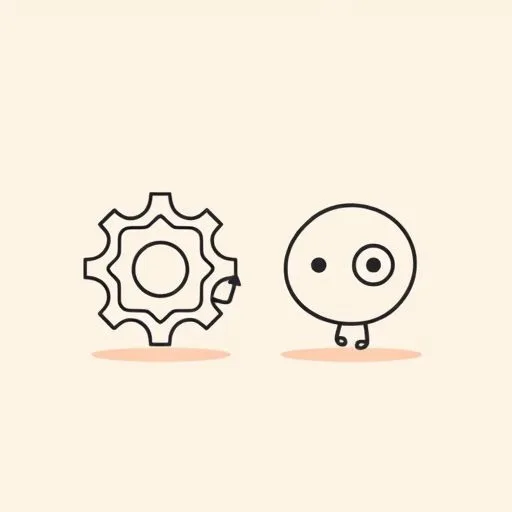
Just yesterday, as we zipped up my 7-year-old’s backpack and debated a new drawing app, I realized… Raising kids in the digital age feels like constant software upgrades, doesn’t it? What if banking’s ‘AI judge’ concept could help us make smarter family tech decisions? It helps us sort through our kids’ tech requests with clarity—no more confusing yes or no quizzes! Ready to transform from tech-confused parent to confident family decision-maker?
What Is an ‘AI Judge’ and How Can It Help Your Family?

Alright, let’s pop the hood on this fascinating concept! Ever heard about those big decisions at banks that affect millions of dollars and customers? They’re starting to use specialized AI systems that don’t just answer questions, but actually judge whether other AI answers are accurate and fair. Pretty amazing, right?
Imagine you’re at the playground and your child comes running to you with a complicated question about why their friend said something hurtful. You don’t just give a quick answer—you weigh the facts, consider emotions, think about relationships, and make a wise decision based on your values. The bank ‘AI judge’ does something similar! It’s just like a parent making important family tech decisions after careful consideration.
What’s happening in places like Lloyds Banking Group is they’re using specialized AI models called FinLLM that understand finance super well. Then they have another AI that checks if the FinLLM’s answers are accurate, fair, and follow the rules. It’s like having a smart committee for every answer!
Here’s the exciting part for parents: this two-step thinking process can help us make better family tech decisions too! Instead of quick reactions to our children’s requests, we can use a similar framework—asking deeper questions before giving that final judgment about technology in our homes.
Building Our Own Family Tech Playbook

Specialists at the bank created FinLLM, which stands for Financial Large Language Model. This AI isn’t just any smart program—it’s specifically trained to understand the complex, nuanced world of banking regulations, customer needs, and financial services information.
Think of it like this: while your phone’s general AI might know a little about everything, FinLLM knows BANKING inside and out! It’s the specialist that banks trust with their most important questions. When it comes to making informed family tech decisions, we need this same specialized approach.
For our families, the equivalent would be building our own ‘family knowledge base’ specifically for technology decisions. What does that actually look like?
First, we need to understand child development! What’s appropriate for your 7-year-old is totally different from what works for a teen. Your neighborhood parenting group, trusted parenting books, and conversations with teachers are all part of your specialized knowledge system for family tech decisions.
Second, we need to understand technology itself—not just what apps are popular, but how they affect children’s attention spans, sleep, and social development. This specialized understanding helps you spot the difference between truly educational content and just digital junk food when making family tech decisions.
Finally, we need to know our own children—their unique personalities, sensitivities, and what helps them thrive. This personal knowledge is like no algorithm in the world! It’s completely customized for your family’s tech environment.
When you combine these three specialized knowledge bases—child development, technology understanding, and your unique knowledge of your child—you’ve basically created a ‘family FinLM’ that gives you amazing insight for making smart family tech decisions!
Training Your Family’s ‘AI Judge’ for Better Tech Decisions

Okay, so you’ve built your specialized knowledge base. Now what? The banks aren’t just letting their judge AI loose on important decisions without training! There’s a careful process they follow.
Researchers at places like Galileo AI explain that this ‘LLM-as-a-Judge’ approach uses a dedicated language model to evaluate AI outputs against specific criteria: accuracy, compliance, bias, and alignment with business rules. In simple terms: they check if answers are correct, follow the rules, are fair to everyone, and match the company’s values. This framework is perfect for making informed family tech decisions.
This is SO applicable to our parenting! Remember our playground example? When your child comes to you with a problem, you might instinctively react. But a ‘trained judge’ approach would pause and ask:
1. Is this information accurate? (Did I get all the facts right about this tech option?)
2. Does this align with our family values? (Is this response consistent with how we want to treat others in our digital interactions?)
3. Is this fair? (Am I considering everyone’s perspective in this family tech decision?)
4. Is this developmentally appropriate? (Will this technology help or hurt my child’s growth?)
Training your family’s ‘judge’ takes practice! Start with small family tech decisions. The next time your child asks for a new app or wants to extend screen time, don’t just say yes or no. Instead, take a breath and run through these four questions. You’ll be amazed how often the right answer becomes clearer!
This ‘judge’ approach is especially important with technology because digital content can be so pervasive and persuasive. Our job isn’t just to say ‘no’ but to help our children understand WHY certain technology choices are better than others. That’s judgment gold for family tech decisions!
How ‘AI Judge’ Thinking Changed Real Family Tech Decisions

I want to share a story that really brought this home for me. After savoring kimchi fried rice at our kitchen table, my daughter ran in from school talking about a new multiplayer game that ‘EVERYONE’ was playing at recess. I had to make a quick decision, but instead of my usual yes/no approach, I decided to channel my inner ‘AI judge.’
First, I checked accuracy: Was this game as popular as she claimed? (A quick chat with other parents confirmed it was indeed a big hit.)
Then, I considered family values: Did this game align with our commitment to kindness and respectful play? (I researched and found it had moderate chat features that could be moderated.)
Next, I thought about fairness: Was I being fair by potentially saying no when her friends could play? (I realized that home supervision could actually be a benefit compared to less supervised play at school, making this a wise family tech decision.)
Finally, developmental appropriateness: Was this suitable for her age and maturity level? (The rating suggested it was fine, but I needed to set clear boundaries about time and interactions.)
The result? We set up a supervised account with clear time limits, turned off chat features, and made it a weekend treat guess what? Not only did she enjoy it responsibly, but she actually appreciated the thoughtfulness behind our family tech decision.
Another time, I used this approach when she wanted to start a YouTube channel. At first glance, I was tempted to say no (lots of inappropriate content out there!). But by running through my ‘AI judge’ checklist:
– Accuracy: Channels for kids her age DO exist with appropriate content
– Family values: We could emphasize creativity and kindness as channel themes
– Fairness: Many kids her age have successful channels, so it wasn’t inherently unfair
– Developmental: This could actually build confidence and digital literacy skills
We ended up setting up a supervised channel where she shares drawings and stories. It’s become a wonderful creative outlet, and we’ve had great conversations about digital citizenship together when making our family tech decision!
See how this approach works? It turns scary ‘unknowns’ into thoughtful, intentional family tech decisions!
Creating Your Family Tech Guide for Smarter Decisions

As you start practicing this ‘AI judge’ approach, you’ll notice patterns emerging about what’s important to your family. This is the perfect time to capture those insights in what I call your ‘Family Tech Constitution’!
Think about it: banks create detailed rules and guidelines that their AI systems must follow. Families can do the same! Your constitution doesn’t need to be formal or complicated. Start with a list of your ‘technology values.’
Our family’s constitution includes statements like:
1. We use technology to create, not just consume.
2. Screen time doesn’t replace face-to-face conversations.
3. Our online actions reflect our offline values.
4. Breaks from tech are important for our brains and relationships.
5. Mom and Dad get final say on technology choices for younger children.
These simple principles act like the ‘rules’ that the bank AI judges must follow. When faced with a new technology question, we simply ask: ‘Does this align with our constitution?’ It becomes the ultimate guide for family tech decisions.
Over time, you’ll find your constitution evolves! Our daughter has actually participated in updating ours, which is fantastic because she’s learning to become her own ‘tech judge’ too, especially when it comes to family tech decisions.
Here’s the beautiful part: this approach doesn’t just help with technology decisions! The same judgment framework can help with questions about friendships, activities, school choices, and more. You’re teaching your child how to think critically about important decisions, not just follow rules. That’s the ultimate goal with any family tech decision – raising critical thinkers.
Isn’t that what we really want? To raise children who can make wise choices when we’re not there to guide them? That’s the power of becoming your family’s ‘AI judge’—you’re not just deciding today’s app downloads; you’re building tomorrow’s decision-makers through every family tech decision you make together!
Source: GenAI in banking: A Computer Weekly Downtime Upload podcast, Computer Weekly, 2025/09/12 04:39:00
